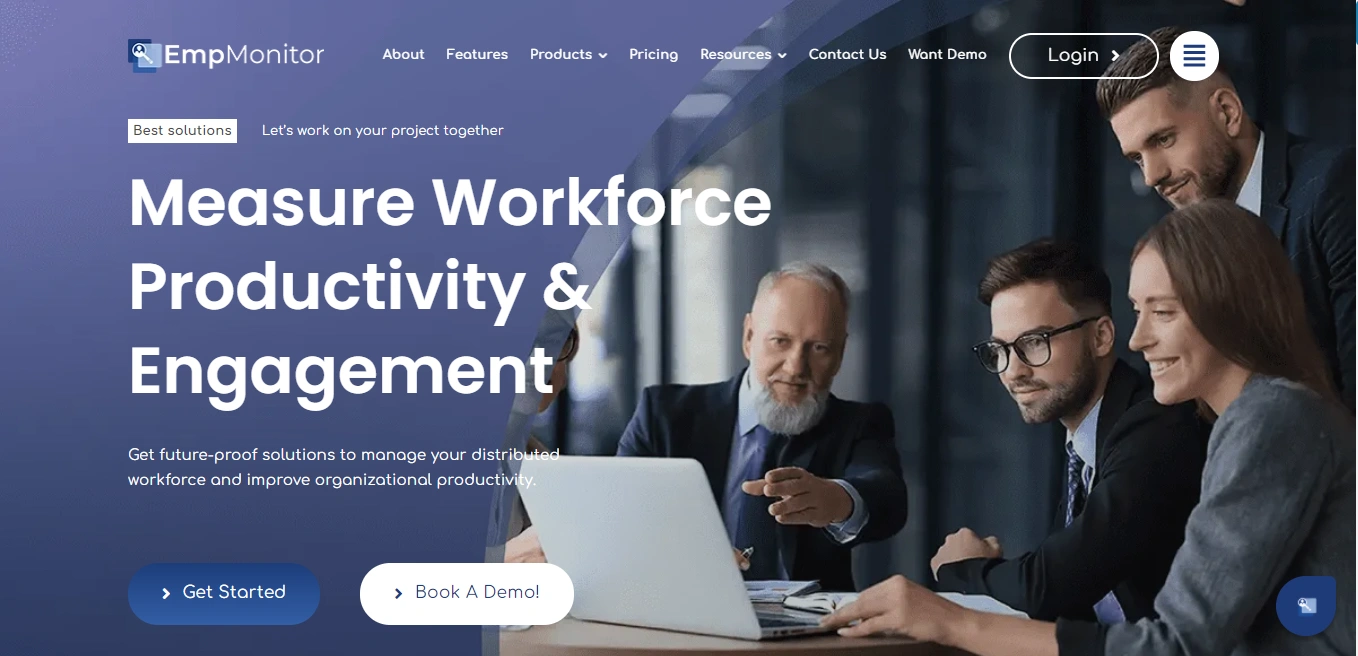Meetings are an integral part of our professional lives, offering opportunities for collaboration, decision-making, and information sharing. However, many of us have experienced meetings that felt like a drain on our time and energy, leaving us wondering if they were truly necessary.
The key to transforming these experiences lies in conducting productive meetings that are purposeful, engaging, and result-oriented.
Productive meetings begin with a clear objective. Before scheduling, ask yourself: What is the purpose of this meeting? If the goal can be achieved through an email or a brief conversation, reconsider holding the meeting.
When a meeting is necessary, prepare and distribute an agenda in advance that outlines the topics to be discussed and allocates time for each item. This helps maintain focus in the discussion and ensures all key points are addressed.
In this blog, we will delve deeper into practices that ensure your meetings are efficient, engaging, and results-oriented.
In a hurry? Listen to the blog instead!
What Are Productive Meetings?
Productive meetings are structured, goal-oriented gatherings designed to maximize efficiency, engagement, and outcomes. Unlike meetings that meander without direction, productive meetings are intentional, ensuring that every participant’s time is respected and well-utilized.
When a meeting is warranted, establishing a concise agenda and sharing it in advance allows participants to prepare adequately, fostering focused discussions and minimizing digressions.
Active participation is another hallmark of productive meetings. Encouraging input from all attendees not only enriches the conversation but also promotes a sense of ownership and collaboration. Effective facilitation ensures that discussions remain on track, time is managed wisely, and every voice is heard.
Moreover, these meetings culminate in actionable outcomes. Assigning clear responsibilities, setting deadlines, and documenting decisions ensure that the meeting’s objectives translate into tangible results.
By adhering to these principles, organizations can transform meetings from time-consuming obligations into powerful tools for driving progress and achieving goals.
Why Productive Team Meetings Matter in 2025?
As we navigate through 2025, the significance of effective team meetings has become increasingly evident. The shift towards remote and hybrid work models has dispersed teams across various locations and time zones, making efficient communication more challenging yet crucial.
Productive meetings serve as a cornerstone for maintaining alignment among team members. They provide a structured platform for sharing updates, discussing challenges, and setting clear expectations, ensuring that everyone is on the same page.
This alignment is crucial for fostering collaboration, as it facilitates the exchange of diverse ideas and perspectives, ultimately leading to innovative solutions.
Moreover, well-structured meetings are instrumental in driving innovation. They create an environment where team members feel valued and heard, promoting a culture of openness and creativity.
In a busy work setting, regular meetings help keep everyone on the same page. They strengthen team bonds and create a feeling of working together toward a shared goal.
The Impact Of Productive Meetings On Business
Implementing productive meetings has a profound impact on business performance:
- Enhanced Decision-Making:
Structured meetings provide a platform for diverse perspectives, leading to more comprehensive discussions. This inclusivity fosters well-rounded decisions that consider various viewpoints. Consequently, teams can make informed choices that align with organizational goals. - Increased Efficiency:
Clear agendas and defined objectives streamline the meeting process, minimizing unnecessary discussions. This focus ensures that time is allocated to priority tasks, enhancing overall productivity. As a result, teams can accomplish more in less time. - Improved Morale:
Effective meetings create an environment where team members feel heard and valued. This recognition boosts employee productivity and fosters a sense of accomplishment. Over time, such positive experiences contribute to higher team morale. - Better Resource Allocation:
By utilizing time and resources judiciously during meetings, organizations can reduce operational costs. Efficient meetings prevent resource wastage, ensuring that efforts are directed toward impactful activities. This strategic approach leads to improved return on investment (ROI).
Implementing these practices can significantly enhance the effectiveness of team meetings, resulting in improved outcomes and a more cohesive work environment. Focusing on productive meetings ensures that every session delivers value and drives progress.
Also Read:
Make Your Employees More Productive With Six Simple Tips!
How to Make Every Meeting Count?
Conducting productive meetings is crucial for team productivity and collaboration. By following structured steps, you can ensure that meetings are purposeful and yield actionable outcomes.
Here are the key steps to have a productive meeting:
1. Define Clear Objectives:
Begin by clearly outlining the meeting’s objective. This sets the direction and ensures that all participants understand the desired outcomes. A well-defined objective keeps discussions focused and relevant.
2. Prepare an Agenda:
Draft a detailed agenda that outlines the topics to be covered and allocates specific time slots for each. Share this agenda with participants beforehand to allow them to prepare adequately. An agenda serves as a roadmap, keeping the meeting structured and on track.
3. Select Relevant Participants:
Invite only those individuals whose input is essential to the meeting’s objectives. Limiting attendees to key stakeholders ensures more meaningful discussions and efficient decision-making. This approach respects everyone’s time and promotes engagement.
4. Assign Roles:
Designate specific roles such as a facilitator to guide the discussion, a note-taker to document key points, and a timekeeper to monitor the schedule. Assigning roles helps maintain order and ensures that all aspects of the meeting are managed effectively.
5. Encourage Participation:
Foster an inclusive environment where all attendees feel comfortable sharing their insights. Encouraging diverse perspectives leads to more comprehensive discussions and innovative solutions. Active participation enhances team cohesion and commitment to outcomes.
6. Summarize and Assign Action Items:
Conclude the meeting by summarizing the key decisions made and outlining the next steps. Assign clear action items to specific individuals along with defined deadlines. This ensures accountability and facilitates progress on the discussed topics.
Implementing these practices can transform meetings into productive meetings that drive collaboration and achieve desired results.
Also Read:
Practical Reasons To Invest In The Team Productivity Tools
How to Make Meetings More Productive?
Meetings are a critical part of business operations, but they can quickly become time-wasting if not planned and executed properly. Understanding how to make meetings productive involves implementing strategic practices that promote focus, participation, and accountability.
By doing so, you can transform meetings into goal-oriented sessions that drive collaboration, improve communication, and deliver tangible results.
10 Best Practices To Make Meetings More Productive
Here are ten proven best practices to help you run efficient and effective work meetings:
1. Evaluate the Necessity of the Meeting:
Before scheduling, ask yourself if a meeting is truly needed. Could the same outcome be achieved through an email, chat, or a shared document? Unnecessary meetings waste time and disrupt workflow. Only hold meetings when real-time discussion and collaboration are essential.
2. Define Meeting Outcomes Instead of Just Agendas:
Rather than listing topics alone, outline the expected outcomes for each agenda item. This helps participants stay results-focused and better understand what needs to be achieved by the end of the meeting.
3. Choose the Right Meeting Format:
Not all meetings need to be formal or lengthy. Consider alternative formats—such as stand-ups, huddles, or asynchronous updates, based on the context. Picking the right format can enhance engagement and save time.
4. Allocate Time Wisely:
Divide the total meeting time among agenda items based on priority and complexity. Time-boxing each topic helps maintain momentum and prevents discussions from dragging. Adhering to the schedule demonstrates respect for everyone’s time.
5. Start and End on Time:
Always begin the meeting promptly and aim to wrap up at or before the scheduled end. Punctuality builds a culture of accountability and professionalism. It also reduces fatigue and helps participants plan their day more effectively.
6. Encourage Active Participation:
Promote an inclusive environment where all attendees feel comfortable voicing opinions and ideas. Ask questions, invite input, and avoid dominating the conversation. Active participation leads to better problem-solving and stronger team engagement.
7. Utilize Visual Aids:
Enhance presentations with visuals such as slides, charts, graphs, or whiteboards. These tools help clarify complex ideas and keep participants engaged. Visuals can make discussions more dynamic and improve information retention.
8. Assign Clear Responsibilities, Not Just Action Items:
Go beyond listing what needs to be done, clearly define who is responsible for each task, and establish deadlines. This fosters accountability and ensures that decisions lead to real follow-through.
9. Follow Up:
Send a follow-up email or summary document shortly after the meeting. Include key decisions, deadlines, assigned tasks, and relevant notes. This keeps participants aligned and provides a reference for future actions.
10. Encourage Feedback:
Regularly ask attendees how meetings can be improved. Use anonymous surveys or quick polls to gather honest insights. Feedback helps refine your approach and ensures that meetings evolve to meet team needs more effectively.
By applying these strategies, you can consistently run productive meetings that respect time, deliver results, and drive team success.
Also Read:
The Ultimate Guide To Effective Work Meetings (9 Different Types)
How to Use Technology for Productive Meetings?
Technology is essential to conducting efficient, focused, and productive meetings. From facilitating remote collaboration to monitoring participation and outcomes, the right tech tools can significantly improve the value of every meeting..
Here’s how different types of technology can enhance your meetings:
1. Video Conferencing Tools:
Virtual meetings have become the norm in hybrid and remote work environments. Video conferencing allows teams to connect face-to-face regardless of location, enabling seamless communication. Features like screen sharing, virtual whiteboards, and chat enhance engagement and help discussions stay on track.
2. Collaborative Document Editing:
Real-time document editing allows participants to contribute ideas, share feedback, and update materials during meetings. This improves team collaboration and ensures everyone has access to the latest, most accurate information, making decision-making quicker and more informed.
3. Project Management Integration:
Using built-in task and project tracking tools can streamline workflows, helping you assign responsibilities and monitor progress directly from your dashboard. For instance, EmpMonitor’s project management capabilities allow you to efficiently allocate resources, track milestones, and collaborate within teams, all of which contribute to more productive meetings.
4. Time Management Tools:
Accurately tracking time spent on various tasks helps you understand how much meeting time is productive versus idle. Time data also supports better scheduling and helps you avoid overrunning meetings. Structuring agendas based on actual work patterns improves efficiency and fosters productive meetings that respect everyone’s time.
5. Employee Monitoring Software:
Understanding team activity during and outside meetings is vital for overall productivity. EmpMonitor offers detailed insights into user activity and work patterns, helping you evaluate whether meeting times are used effectively. These reports can guide adjustments to meeting frequency, duration, or format based on real behavioral data.
6. Workforce Management Software:
Efficient meeting scheduling relies on understanding employee availability, shift patterns, and current workloads. Workforce management software helps streamline this process by providing real-time visibility into team schedules, time tracking, and task assignments. Tools like EmpMonitor allow managers to coordinate meetings at times that suit everyone’s workload, avoiding scheduling conflicts and minimizing disruptions. This leads to smarter time use, reduced burnout, and improved overall productivity.
Let’s take a closer look at the additional features EmpMonitor offers to further enhance team productivity and streamline your meeting management.
The Key Benefits of Using EmpMonitor to Improve Meetings and Maximize Efficiency
EmpMonitor is a powerful, productive monitoring software designed to help businesses track employee activity, streamline operations, and boost productivity. By providing real-time insights and comprehensive tools, EmpMonitor enables managers to make informed decisions and foster a more engaged, efficient workforce.
Below are some of its key features:
- Employee Monitoring Software:
Tracks team activity and productivity with detailed insights into daily and hourly performance metrics. This allows managers to identify high performers, spot bottlenecks, and optimize workflows to improve overall efficiency. - Time Tracking:
Monitors work hours with automated timesheets and provides data on active vs. idle time for accurate productivity analysis. It helps ensure compliance with labor laws while enabling fair and transparent time management for employees. - User Activity Monitoring:
Captures real-time user behavior and app usage to evaluate work habits and enhance accountability. By understanding how time is spent on different applications and websites, managers can guide employees toward more focused work patterns. - Attendance Monitoring:
Automates attendance, leave management, and payroll alignment through a centralized, paperless system. This reduces administrative overhead, minimizes errors, and ensures timely salary processing. - Workforce Productivity & Engagement:
Provides 360-degree operational support with analytics to maximize efficiency and boost team engagement. The platform identifies trends and patterns, enabling proactive interventions to maintain high morale and motivation. - Project Management:
Enables seamless task allocation, real-time collaboration, and progress tracking to ensure project success. By centralizing communication and deadlines, EmpMonitor helps teams stay aligned and meet targets consistently, supporting better workflows and more productive meetings.
EmpMonitor empowers businesses to streamline workforce management, improve productivity, and foster a more connected and efficient team.
Conclusion
Mastering productive meetings is crucial to organizational success, relying on effective preparation, active participation, and ongoing improvement. Tools like EmpMonitor, with features such as time tracking and attendance management, provide real-time insights that help boost productivity and accountability.
Integrating EmpMonitor can make your meetings more effective and drive overall business growth.
FAQs
1. What role does meeting culture play in improving productivity?
Ans. Meeting culture plays a crucial role in enhancing productivity by establishing clear expectations for behavior, communication, and participation. A culture that values punctuality, respects diverse opinions, and encourages open feedback leads to more focused, inclusive, and efficient meetings. This, in turn, boosts team morale and ensures better collaboration and outcomes.
2. What are the best days and times to schedule meetings for maximum productivity?
Ans. Studies suggest that mid-week mornings (Tuesday to Thursday, between 10 a.m. and noon) are the most effective for holding meetings. Avoid scheduling meetings early Monday or late Friday when energy and focus tend to dip. Using employee availability tools can further optimize timing and support more productive meetings..
3. What should I do if a meeting goes off track?
Ans. If a meeting begins to veer off-topic, the facilitator should gently redirect the conversation back to the agenda. Acknowledge valuable input and suggest discussing unrelated points in a separate follow-up or sidebar meeting. Using a “parking lot” technique, where off-topic ideas are noted for later, can help maintain focus without dismissing contributions.


















